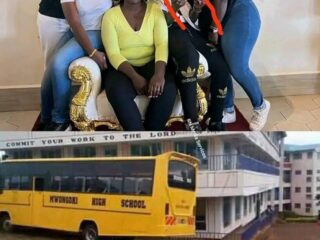Kalenjin tribe is the third largest tribe in Kenya. There are steps to be followed before a girl/boy gets marriage. The Kalenjin love their tradition and culture.
Procedure One (Proposal)
- The first step is the proposal which takes place, the groom proposes to the bride
- The groom’s family visits the bride’s family to request for her hand in marriage
- They have to be accompanied by the uncles, grandparents, aunts and neighbours

Procedure two (Engagement) ‘koito’
- After the proposal proceeds the engagement otherwise known as ‘koito’
- The groom’s family officially travels to meet the bride’s family.
- The whole of groom’s clan is invited into a space/room to discuss dowry negotiations
- While discussing the dowry negotiations the families from both parties get to interact and know each other.
- At this stage both families want to know the clans name (oret) and the name of the totem animal (tiondo) which represents them as it is in the kalenjin community.
- All this is done to prevent one from marrying from their own clan.
- After everything is confirmed , the dowry negotiations proceed
- The bride’s family usually demands for appreciation because they have been able to raise their daughter well.
- The dowry is given in form of goats, cows and sheep.
- This may differ among the sub-tribes in Kalenjin
- After the dowry negotiations are over, a ceremony is held to celebrate their union.
Procedure three (Wedding Ceremony)
- After the second procedure has been adhered to, what follows next is the wedding ceremony otherwise known as ‘ratet.’
- Ratet means tying
- This time, it is the bride’s family going to the groom’s family escorting their daughter to her new home and in the process they also confirm the dowry they agreed on
- The whole village, neigbours, relatives are invited because it is a ceremony.
- The whole process again is an expensive affair; however, the groom must prove that he can take care of the bride and his family.
- The bride’s father is responsible for confirming the dowry paid
- He wears a traditional cloak made out of an animal skin and he holds a special stick on his hand.
- He proceeds and walks to the field alongside the groom to go have a look at cattle for dowry
- He is also responsible for marking the cattle for proof of identity after the confirmation.
- Ratet usually happens after dark in a room, where parties from both families assemble together and sit around a small pot of beer decorated with ‘korosek’ a sacred plant.
- This beer is usually taken using long tubes.
- The guests drink while the bride and the groom sit opposite sides of the officiating elder.
- A plait of grass otherwise known as ‘segutyet’ is made then anointed with butter is blessed
- The sacred leaves of the plant are carried around the groom and bride four times.
- The elder chanting his blessings asking for prosperity in their homes
- Afterwards, the groom proceeds to tie his hands to the bride and the brides also does the same, this signifies faithfulness in their marriage.
- When this is over, the people celebrate throughout the night.














